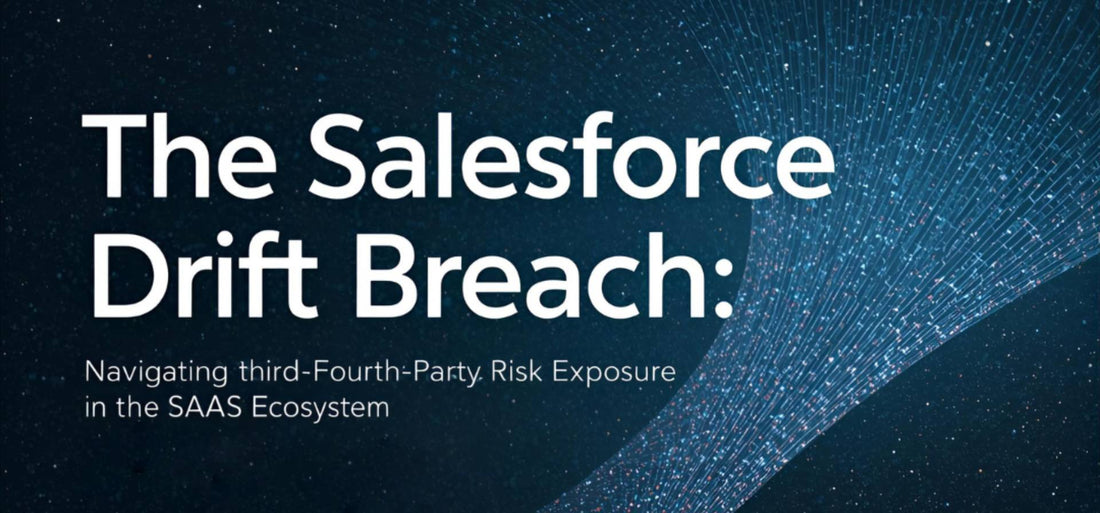
The Salesforce Drift Breach: Navigating Third- and Fourth-Party Risk Exposure in the SAAS Ecosystem
Salesforce is one of the world’s most widely adopted CRM platforms, powering everything from B2B sales pipelines to public health initiatives—like vaccine distribution during the COVID-19 pandemic. With its vast customer base and partner ecosystem, Salesforce enables thousands of third-party applications to integrate and extend its capabilities.
But with great connectivity comes great risk.
Recently, threat actors compromised authentication tokens for Drift, a workflow automation app integrated with Salesforce via Salesloft. This allowed unauthorized access to Salesforce CRM instances across multiple organizations—including cybersecurity leaders like Proofpoint, Tenable, and CyberArk.
Importantly, Salesforce itself wasn’t breached. The attack exploited a third-party integration, demonstrating how even trusted platforms can become vulnerable through their ecosystem.
Key takeaway: Organizations are responsible and accountable for securing their own data—including when data resides on third-party SAAS applications and fourth-party integrations are enabled.









